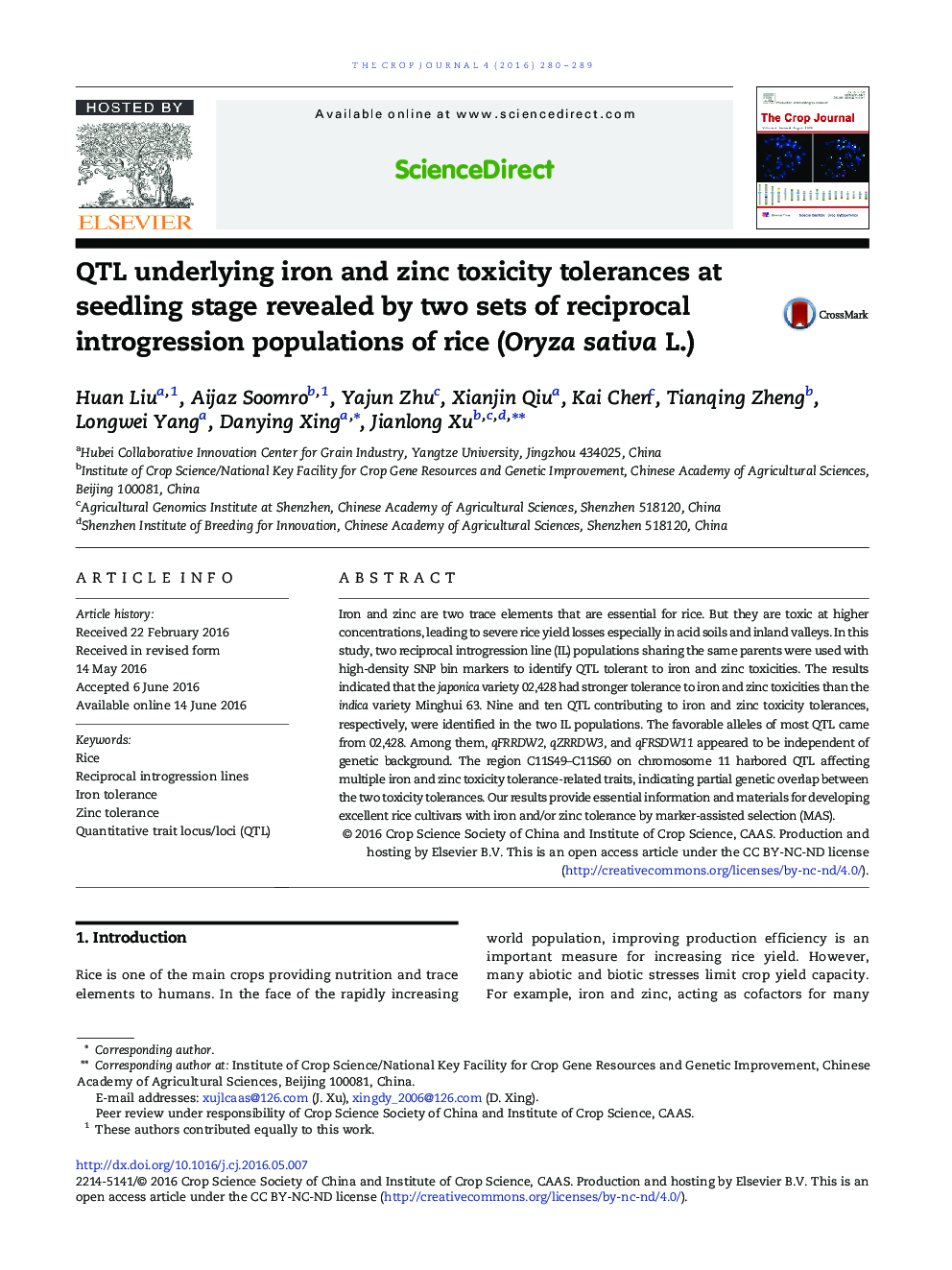| Article ID | Journal | Published Year | Pages | File Type |
|---|---|---|---|---|
| 2079403 | The Crop Journal | 2016 | 10 Pages |
Iron and zinc are two trace elements that are essential for rice. But they are toxic at higher concentrations, leading to severe rice yield losses especially in acid soils and inland valleys. In this study, two reciprocal introgression line (IL) populations sharing the same parents were used with high-density SNP bin markers to identify QTL tolerant to iron and zinc toxicities. The results indicated that the japonica variety 02,428 had stronger tolerance to iron and zinc toxicities than the indica variety Minghui 63. Nine and ten QTL contributing to iron and zinc toxicity tolerances, respectively, were identified in the two IL populations. The favorable alleles of most QTL came from 02,428. Among them, qFRRDW2, qZRRDW3, and qFRSDW11 appeared to be independent of genetic background. The region C11S49–C11S60 on chromosome 11 harbored QTL affecting multiple iron and zinc toxicity tolerance-related traits, indicating partial genetic overlap between the two toxicity tolerances. Our results provide essential information and materials for developing excellent rice cultivars with iron and/or zinc tolerance by marker-assisted selection (MAS).
